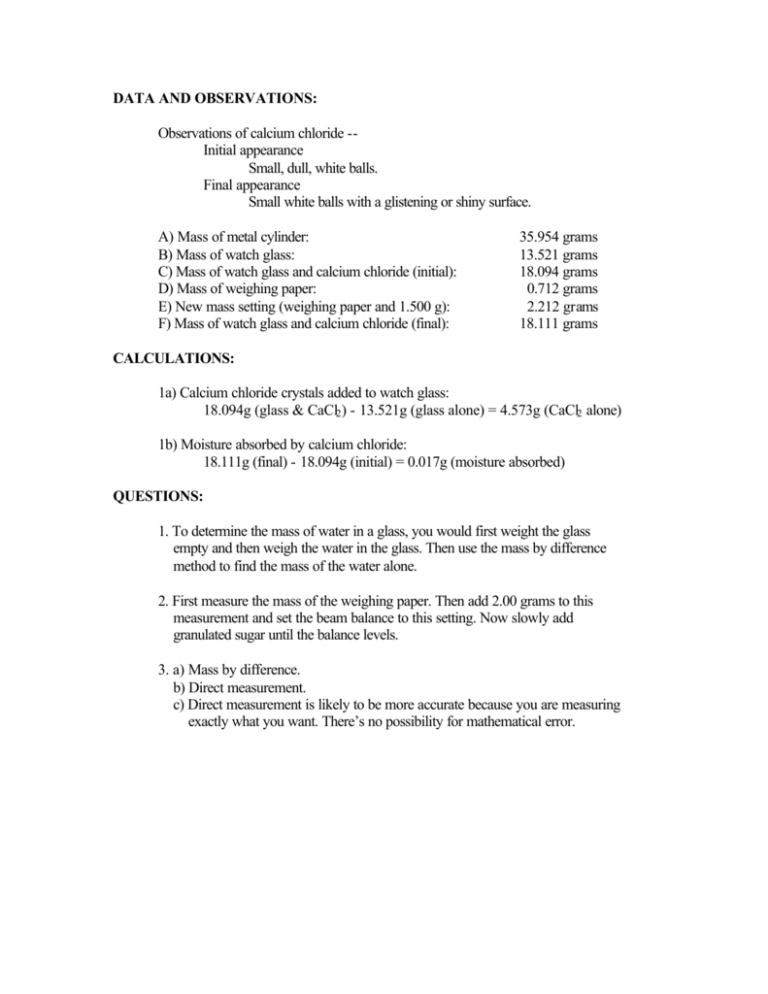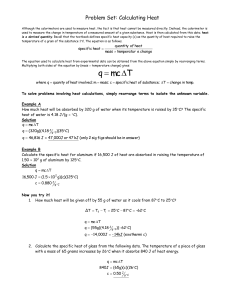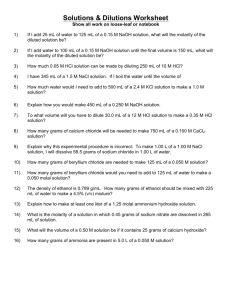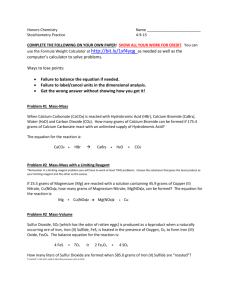Experiment 1
advertisement

DATA AND OBSERVATIONS: Observations of calcium chloride -Initial appearance Small, dull, white balls. Final appearance Small white balls with a glistening or shiny surface. A) Mass of metal cylinder: B) Mass of watch glass: C) Mass of watch glass and calcium chloride (initial): D) Mass of weighing paper: E) New mass setting (weighing paper and 1.500 g): F) Mass of watch glass and calcium chloride (final): 35.954 grams 13.521 grams 18.094 grams 0.712 grams 2.212 grams 18.111 grams CALCULATIONS: 1a) Calcium chloride crystals added to watch glass: 18.094g (glass & CaCl2 ) - 13.521g (glass alone) = 4.573g (CaCl2 alone) 1b) Moisture absorbed by calcium chloride: 18.111g (final) - 18.094g (initial) = 0.017g (moisture absorbed) QUESTIONS: 1. To determine the mass of water in a glass, you would first weight the glass empty and then weigh the water in the glass. Then use the mass by difference method to find the mass of the water alone. 2. First measure the mass of the weighing paper. Then add 2.00 grams to this measurement and set the beam balance to this setting. Now slowly add granulated sugar until the balance levels. 3. a) Mass by difference. b) Direct measurement. c) Direct measurement is likely to be more accurate because you are measuring exactly what you want. There’s no possibility for mathematical error.







